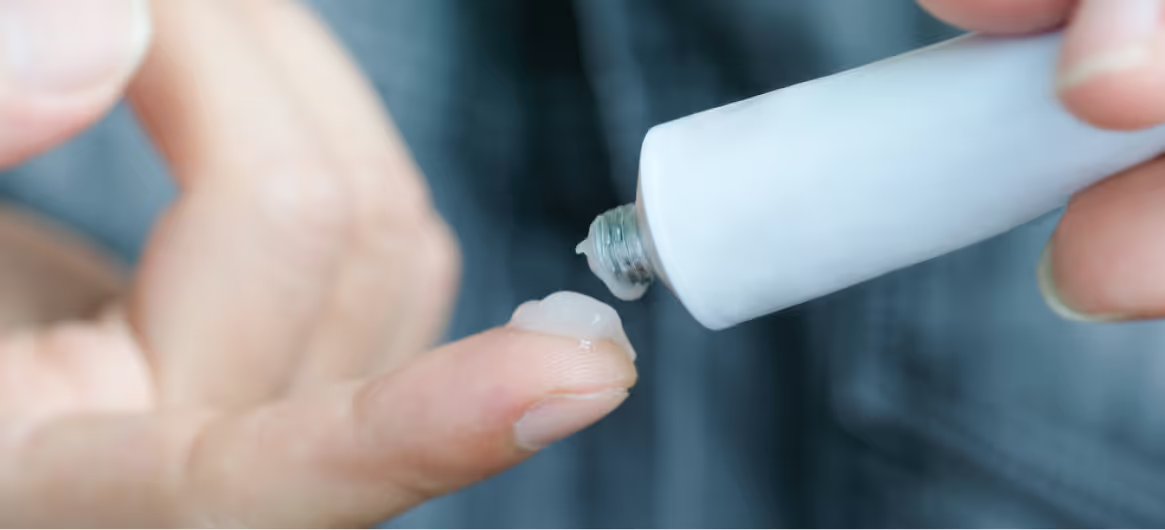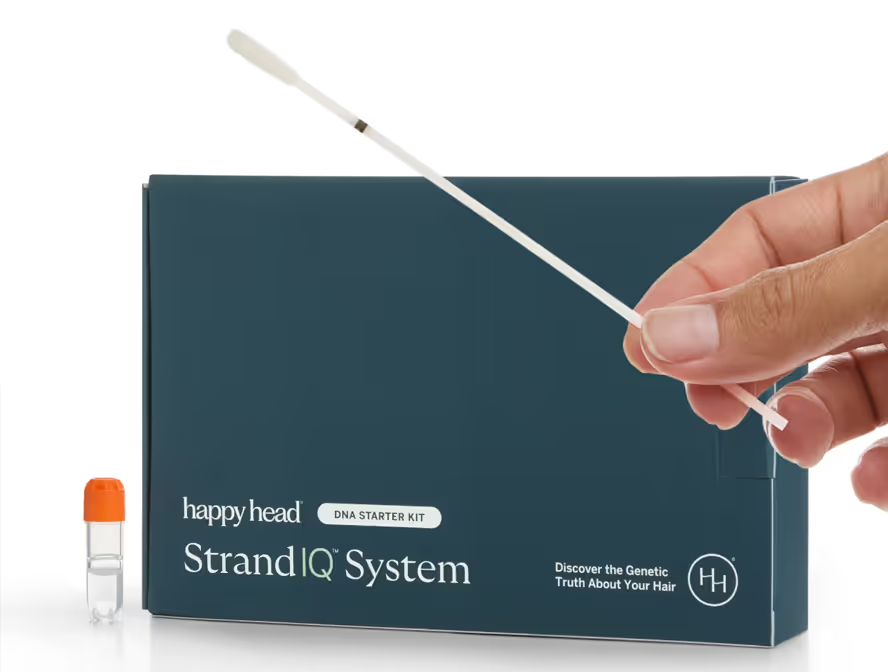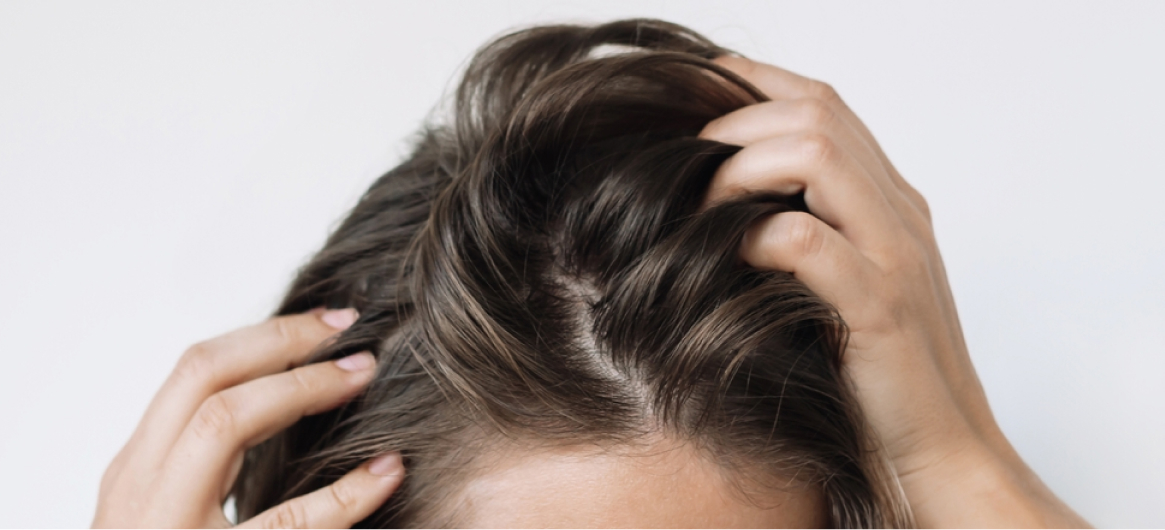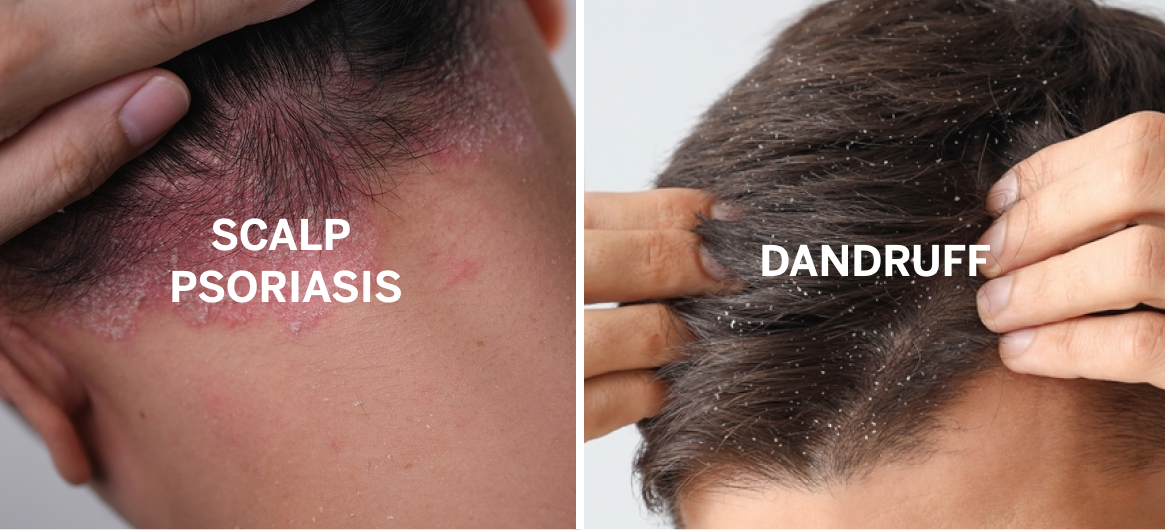Clobetasol for hair loss provides a targeted approach to treating certain stubborn and inflammatory scalp conditions that can lead to thinning or patchy hair loss.
While not a universal remedy, this potent topical steroid offers hope for patients whose hair loss stems from immune-related scalp inflammation. Understanding how clobetasol works, its benefits, and potential risks is essential for anyone considering this treatment.
Let’s explore clobetasol’s role in hair loss management, the types of conditions it addresses (and those it doesn’t), and safe, effective alternative treatments to consider.
What Is Clobetasol?
Clobetasol is a high-potency topical corticosteroid commonly prescribed to treat inflammatory skin conditions such as eczema, psoriasis, and lichen planus. It works by suppressing the immune response in the skin to reduce redness, swelling, and itching.
Available in various formulations, including creams, ointments, foams, and shampoos, clobetasol is intended for short-term use due to its strength and potential side effects.
It is not a general-use steroid and is typically reserved for more severe or resistant skin conditions that haven’t responded to milder corticosteroids.
How Does Clobetasol Work for Hair Loss?
Clobetasol is used off-label for certain inflammatory types of hair loss, primarily because of its powerful anti-inflammatory and immunosuppressive effects.
Hair loss caused by autoimmune or inflammatory scalp conditions, such as alopecia areata, often involves immune cells attacking hair follicles. By reducing inflammation and calming the immune response, clobetasol can help preserve hair follicles and encourage regrowth.
However, it does not stimulate hair growth directly and is ineffective for non-inflammatory hair loss types, such as androgenetic alopecia (pattern baldness).
Which Types of Hair Loss Can Clobetasol Treat?
Clobetasol is most commonly used to treat inflammatory and autoimmune hair loss conditions. These include:
- Alopecia areata: An autoimmune disorder that causes patchy hair loss on the scalp and body.
- Alopecia totalis and alopecia universalis: Severe forms of alopecia areata that cause total hair loss on the scalp or across the body, respectively.
- Scalp psoriasis: A condition that causes thick, scaly patches on the scalp, which can lead to hair loss.
- Seborrheic dermatitis: A common scalp condition characterized by red, itchy, flaky skin.
- Lichen planopilaris: A rare inflammatory condition that causes patchy hair loss and scarring on the scalp.
- Discoid lupus erythematosus: A chronic scarring skin condition characterized by persistent, scaly plaques.
Remember that clobetasol is not suitable for androgenetic alopecia or hair loss caused by hormonal or genetic factors. Its role is mainly to reduce inflammation and immune attack on hair follicles.
It's important to get an accurate diagnosis from a dermatologist to determine if clobetasol is an appropriate treatment for your specific type of hair loss.
How Effective Is Clobetasol for Hair Regrowth?
The effectiveness of clobetasol for hair regrowth varies depending on the type and severity of hair loss, as well as individual factors such as age, overall health, and adherence to treatment.
In general, clobetasol has shown promising results for certain types of hair loss, particularly those related to inflammatory scalp conditions.
Studies have found that clobetasol can be effective in promoting hair regrowth in adults with alopecia areata. One study showed that 89% of participants experienced significant hair regrowth after using clobetasol foam for 12 weeks.
Another study performed on 41 children with alopecia areata found that those treated with clobetasol propionate 0.05% cream showed a statistically significant greater decrease in the surface area with hair loss compared to those treated with hydrocortisone 1% cream.
For scalp psoriasis and seborrheic dermatitis, clobetasol can reduce inflammation, itching, and flaking, which can help minimize hair shedding and promote healthier hair growth.
How Long Does It Take To See Results?
The timeline for seeing results with clobetasol for hair loss depends on several factors, including the type and severity of hair loss, the form of clobetasol used, and individual response to treatment.
Visible improvement typically occurs within 6 to 12 weeks of consistent clobetasol application. Early signs include reduced redness and scalp inflammation, followed by gradual hair regrowth.
Patience and adherence to prescribed treatment duration are essential, as premature discontinuation may limit effectiveness.
How To Use Clobetasol for Hair Loss Safely
Using clobetasol for hair loss safely is critical to minimize the risk of side effects and ensure the best possible results. Always follow your dermatologist's instructions for application, dosage, and duration of treatment.
Application Methods for Scalp and Hair
Clobetasol comes in various forms, each with its own application method.
- For creams and ointments, apply a thin layer to the affected areas of the scalp, rubbing it in gently.
- For foams and solutions, part the hair and apply the product directly to the scalp, massaging it in lightly.
Be sure to wash your hands thoroughly after application to avoid spreading the medication to other parts of your body. Avoid getting clobetasol in your eyes, nose, or mouth. If you do, rinse the area with plenty of water.
Recommended Dosage and Duration
Your dermatologist will prescribe the appropriate dosage and duration of treatment based on your specific type and severity of hair loss. In general, clobetasol is used once or twice daily for a period of 2–12 weeks, depending on the condition being treated.
It's important not to use clobetasol for longer than prescribed, as prolonged use can increase the risk of side effects and may lead to skin thinning or other complications.
If you don't notice improvements after the prescribed treatment period, talk to your dermatologist about alternative options.
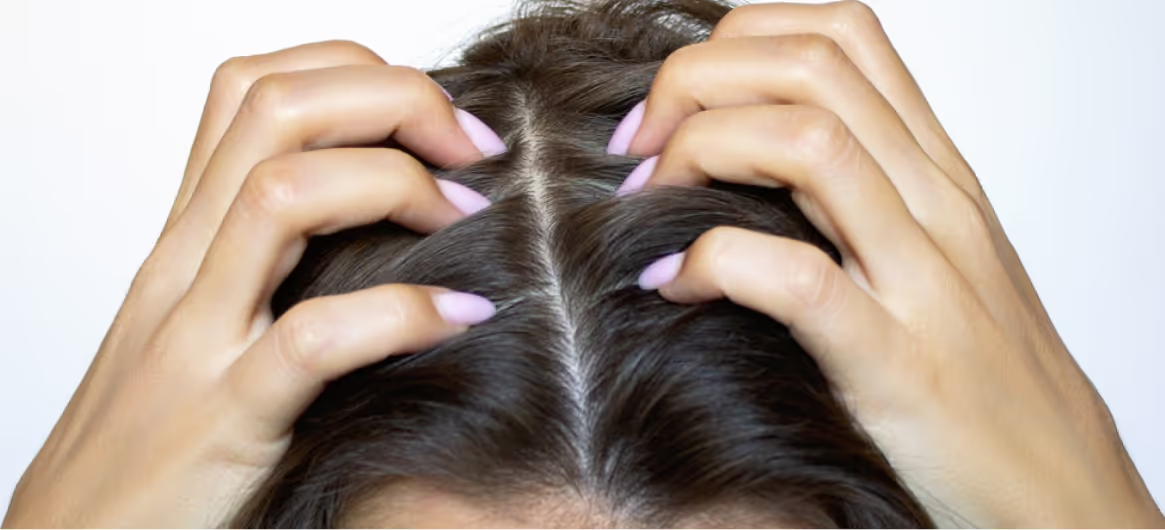
Potential Side Effects of Clobetasol for Hair Loss
While clobetasol is generally well-tolerated when used as directed, it can cause side effects in some people. It's important to be aware of these potential risks and to report any concerning symptoms to your dermatologist.
Common side effects of clobetasol for hair loss include:
- Burning, stinging, or itching at the application site.
- Skin irritation, redness, or dryness.
- Acne or folliculitis (inflammation of hair follicles).
- Skin thinning or discoloration.
Rare but serious side effects may include:
- Skin thinning (atrophy) or stretch marks (striae).
- Folliculitis (inflammation of hair follicles).
- Adrenal suppression (when the body produces fewer of its own corticosteroids).
- Cushing's syndrome (a hormonal disorder caused by high levels of corticosteroids).
- Hyperglycemia (high blood sugar).
- Allergic reactions.
If you experience any severe or persistent side effects, stop using clobetasol and contact your dermatologist right away.
How To Minimize Risks
To minimize the risk of side effects when using clobetasol for hair loss:
- Use the medication exactly as prescribed by your dermatologist.
- Don't use more than the recommended amount or apply it more frequently than directed.
- Avoid using clobetasol on broken, infected, or inflamed skin.
- Don't cover the treated area with bandages or dressings unless instructed to do so.
- Avoid applying clobetasol to the face, underarms, or groin area.
- Don't use clobetasol for longer than prescribed.
Who Should Avoid Clobetasol for Hair Loss
Clobetasol is not recommended for everyone. You should avoid using clobetasol if you:
- Are allergic to clobetasol or any of its ingredients.
- Have untreated bacterial, viral, or fungal skin infections.
- Have certain health conditions, such as diabetes, cataracts, or glaucoma.
- Are pregnant or breastfeeding (unless advised by your doctor).
- Have non-inflammatory hair loss, such as androgenetic alopecia.
Your dermatologist can help determine if clobetasol is safe and appropriate for you based on your medical history and current health status.
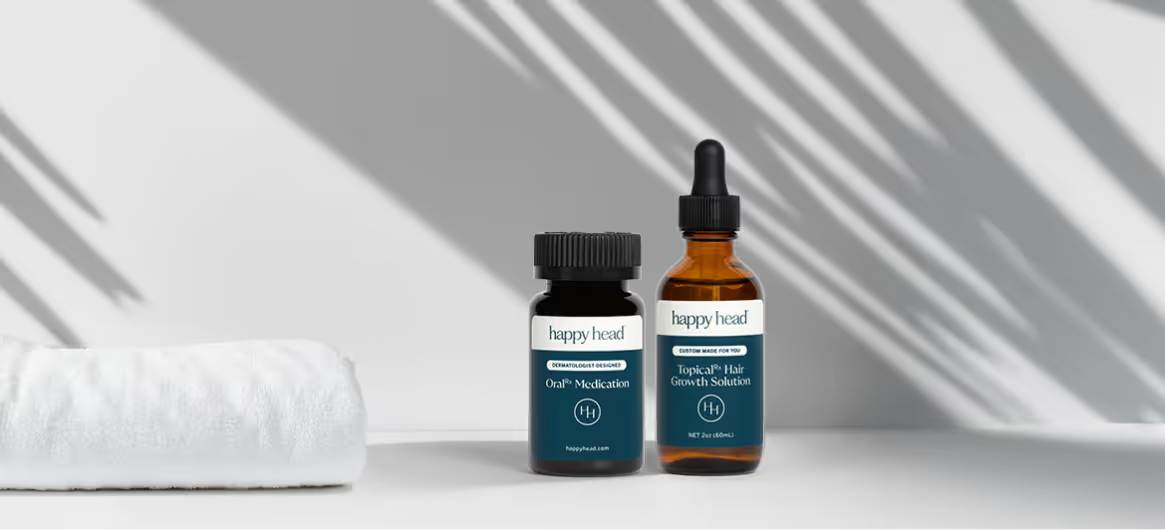
Alternatives to Clobetasol for Hair Loss
While clobetasol can be effective for certain inflammatory hair loss conditions, many other treatments target different causes or complement steroid therapy.
Choosing the right option depends on the specific hair loss condition, patient preferences, and medical advice. Here are several well-established alternatives:
- Minoxidil: A vasodilator available over the counter or by prescription that stimulates hair follicles and prolongs the growth phase.
- Finasteride: A prescription medication that blocks the conversion of testosterone to DHT, a hormone linked to male pattern baldness.
- Dutasteride: Similar to finasteride, prescription dutasteride inhibits more DHT types, offering stronger effects for androgenetic alopecia.
- Spironolactone: An antiandrogen often prescribed to women with hormonal hair loss that reduces androgen effects on hair follicles.
- PRP Therapy (Platelet-Rich Plasma): A non-surgical procedure where platelet-enriched plasma is injected into the scalp to promote healing and hair regrowth.
- LLLT (Low-Level Laser Therapy): Uses laser light to stimulate cellular activity in hair follicles, improving hair density and thickness.
- Scalp Massage: Enhances blood flow and may reduce stress-related hair shedding, serving as a supportive practice alongside medical treatments.
- Lifestyle Improvements: Managing stress, maintaining a balanced diet rich in vitamins and minerals, ensuring adequate sleep, and avoiding damaging hair practices can all positively impact hair health and reduce hair loss.
Is Clobetasol Right for Your Hair Loss Type?
Determining whether clobetasol is right for your hair loss type depends on several factors, including the underlying cause of your hair loss, the severity of your condition, and your overall health.
Clobetasol may be a good option for hair loss related to inflammatory scalp conditions such as alopecia areata, scalp psoriasis, seborrheic dermatitis, and lichen planopilaris.
If you've tried other treatments without success, or if your hair loss is causing significant distress, talk to your dermatologist about whether clobetasol for hair loss could be a suitable option.
Talk to a board-certified dermatologist to discuss your goals and find the solution that is best for you.
Frequently Asked Questions
Can clobetasol regrow hair?
Clobetasol may help regrow hair in certain inflammatory scalp conditions, such as alopecia areata or lichen planopilaris. It works by reducing inflammation around hair follicles, but results vary greatly, and it’s not effective for all types of hair loss.
How to use clobetasol propionate for hair loss?
Apply a thin layer of clobetasol propionate to the affected scalp area once or twice daily, as directed by your dermatologist. Avoid overuse, and do not apply it to broken skin. Only use this potent steroid under close medical supervision to prevent side effects.
Can you put clobetasol on your scalp?
Yes, clobetasol is often prescribed as a foam, gel, solution, or shampoo specifically for scalp use. It should be applied sparingly to the affected areas and not used continuously long-term. Always follow your dermatologist’s instructions closely when using it.
What are the cons of clobetasol?
Potential downsides of clobetasol for hair loss include skin thinning, irritation, burning, and, with prolonged use, hormone suppression or folliculitis. It’s not a long-term solution for most and should only be used under medical guidance to manage specific types of inflammatory scalp conditions.



